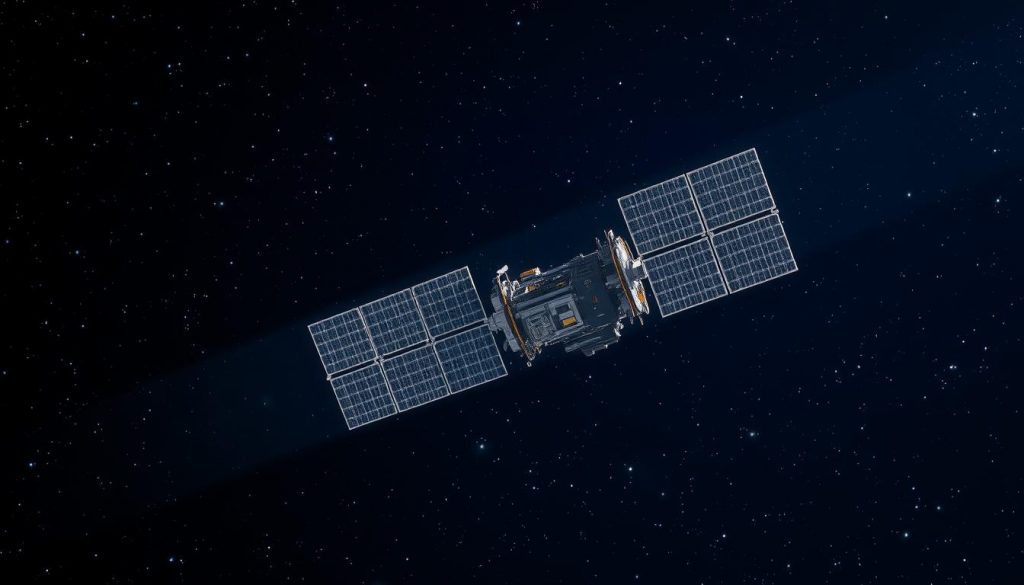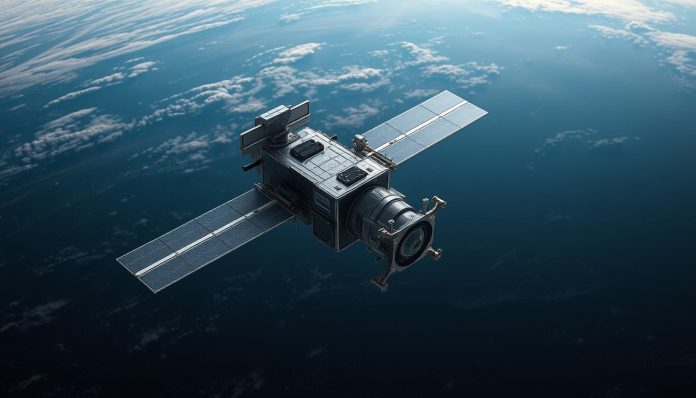One test delivered roughly 1 Gbps from geostationary orbit using a 2‑watt near‑infrared beam across about 36,000 km. That single figure reframes expectations for long‑range optical links and pushed this result into UK space news cycles overnight.
The experiment combined adaptive optics with mode diversity reception (AO‑MDR) rather than raw power. This made a low‑power transmitter achieve gigabit rates, showing an efficiency‑led development in free‑space communications using a 2-watt laser for data transmission.
For UK readers, the significance is practical: optical downlinks could alter procurement choices, spectrum policy and resilience planning. The test did not harm any hardware and was a communications trial, not a destructive act.
Readers will find a clear explanation of how the method works, why the approach matters for business and defence, and what’s next for internet infrastructure and photonics supply chains. For background reporting and the original coverage, see this detailed report.
Key Takeaways
- Gigabit downlink: A geostationary test reached ~1 Gbps using AO‑MDR and a low‑power beam.
- Efficiency over force: Wavefront control, not brute energy, enabled the result.
- Policy impact: UK procurement and regulation may need to adapt for optical links.
- Myth clarified: The trial was communications‑only; no destructive claim is supported.
- Strategic chance: Britain can invest in ground optics, photonics and standards work.
Introduction: The Core Achievement in UK and global space news
A geostationary test delivered 1 Gbps to Earth from roughly 36,000 km while using 2‑watt laser power. This feat shows that efficient link design can produce high throughput without large transmitters. The result rewrites expectations for long‑haul optical data links.
Record 1 Gbps downlink from geostationary orbit using a 2‑watt laser
The demonstration achieved a 1 gbps downlink from a geostationary platform using a 2‑watt laser across the atmosphere. That rate is roughly five times faster than typical Starlink user speeds, offering a clear baseline for comparison.
Why this matters to UK space news and latest technology news
This experiment matters for UK policy and industry. Ofcom, the UK Space Agency and British photonics firms could see new roles in optical ground stations, standards and testing.
- Practical impact: Higher data speed from GEO changes how rural internet and national resilience are planned.
- Technical lesson: Gigabit links at low power challenge assumptions about link budgets in space communications.
The “How”: Overcoming Atmospheric Obstacles with AO‑MDR synergy
Atmospheric turbulence is the main hurdle that scrambles optical beams and cuts throughput on long‑range links.
The air distorts the wavefront, scatters energy and weakens the received signal. Over GEO distances this effect grows, so traditional links needed far more power to stay reliable.
Atmospheric turbulence
Turbulence creates rapid phase errors and scintillation. That makes a once‑clean beam arrive as many overlapping, corrupted modes.
Adaptive optics (AO)
Adaptive optics uses fast wavefront sensors and deformable mirrors to correct phase errors in real time. This restores beam quality and stabilises the received signal.
Mode diversity reception (MDR)
Mode diversity reception captures several spatial modes rather than one. The receiver recombines modal energy to recover data when the wavefront is scrambled.
AO‑MDR synergy
The combined approach first corrects distortions, then exploits remaining modal content. This ao-mdr synergy cuts fade events and sustains gigabit communication with low‑power laser transmitters.
| Issue | AO role | MDR role |
|---|---|---|
| Wavefront error | Real‑time correction | Reconstructs residual modes |
| Scintillation | Stabilises beam | Combines distributed energy |
| Link availability | Reduces short fades | Improves reception diversity |
Practical note: field demonstrations, including a recent mobile terminal trial at 100 Gbps, show these systems moving from lab to operation. For UK planners, this systems approach changes how satellite communication links are designed and scaled.
China’s Laser Satellite Breakthrough: A New Challenge to Starlink’s Dominance
A geostationary test proved that clever optics and reception can deliver gigabit links with very low transmitter power.
The experiment used a 2‑watt laser to reach about 1 Gbps from orbit. That rate is roughly five times faster than many Starlink ground speeds, which typically range from 50–250 Mbps.

Performance and architecture contrast
The GEO demonstration shows a single link can beat typical speeds seen on low earth orbit services for raw downlink throughput. Starlink relies on radio for ground transmission and inter‑satellite optical links, while this trial relied on directed optical transmission for the Earth leg.
Debunking the viral “laser attack” myth
Headlines that claimed a weaponised strike were incorrect. The event was a controlled communication experiment and did not target or damage other satellites.
- Efficiency: using 2‑watt power delivered high speed, suggesting lower energy per bit.
- Spectrum relief: optical transmission can ease radio congestion in crowded markets.
- Market signal: incumbents and entrants must reassess link design, not just constellation size.
| Feature | GEO optical link | LEO radio service |
|---|---|---|
| Typical downlink | 1 Gbps (demo) | 50–250 Mbps (user) |
| Ground tech | Optical terminals, AO‑MDR | Radio antennas, phased arrays |
| Operational note | Proof of communications concept | Wide coverage, low latency |
The “Why it Matters”: China’s different approach to satellite communications
Focusing on high‑efficiency optical links lets fewer platforms deliver large aggregate capacity.
The geostationary route trades massed constellations for concentrated throughput. One GEO node with optical payloads can cover broad regions, reducing the number of satellites and operational complexity compared with sprawling low earth orbit constellations.
Business effects are clear: lower power per bit and higher bandwidth can shrink energy bills, cut gateway loads and reduce long‑term operating costs for satellite communications providers.

Manufacturing and integration angle
OEMs now prioritise scalable optics, ruggedised ground terminals and AO‑MDR‑ready receivers. Modular optical payloads, seen in recent development plans and demonstrations, speed upgrades and lower time‑to‑market.
- Infrastructure: fewer uplink sites and simpler backhaul can preserve capacity headroom.
- Supply chain: UK firms in photonics, detectors, deformable mirrors and precision machining stand to gain.
For industry readers, this model also affects spectrum policy and licensing because optical links relieve radio congestion. For further context on commercial opportunities and systems development, see this industry guide.
The “What’s Next”: broader implications for space, internet infrastructure, and the UK
Investing in ground optics and standards will let the UK translate experimental wins into lasting infrastructure gains.
UK outlook: the combination of the 1 Gbps GEO trial and high‑speed mobile demonstrations shows how optical links can augment national internet capacity. Building optical ground stations at varied latitudes will raise availability and attract international operators seeking European landing points.
Practical roadmap for industry and policy
The UK should lead on technical standards for link budgets, safety and atmospheric correction. That will speed commercial deployment and reduce friction for satellite communication providers.
- Supply chain niches: photonics, adaptive hardware, beam‑steering and high‑reliability terminals.
- Infrastructure integration: fold optical backhaul into national networks to boost data capacity and ease radio spectrum use.
- Resilience: plan hybrid architectures mixing optical downlinks with radio fallbacks for adverse weather.
Participation in demonstrations with GEO and low earth orbit partners, plus clear export and security rules, will position UK firms to supply components and services in the evolving space communications market.
Conclusion: China’s Laser Satellite Breakthrough: A New Challenge to Starlink’s Dominance
This GEO trial showed that careful wavefront control and modal capture can sustain gigabit-class gbps links from high orbit.
The result validates ao-mdr synergy as a practical route: adaptive optics stabilised the beam while mode diversity reception reclaimed scrambled energy. That combination kept transmission steady during the experiment using 2-watt hardware.
For UK planners the takeaway is clear. Optical downlinks can raise bandwidth and reduce energy per bit, while working alongside radio to create hybrid systems that balance availability and cost.
Seen alongside CGST’s mobile 100 Gbps trials and NASA’s TBIRD/DSOC work, this feat signals a path from demos to deployable networks. The UK should back trials, certify ground facilities and build supply‑chain skills to turn this technical breakthrough into national capability.
For more articles on Space, please follow the link.


